What Causes Inflammation That Leads To Pain, Induration, Ulceration and Degeneration of the Body?
Abstract
Recent research has suggested that there is a link between tissue inflammation and a cancerous condition. In the following article I have suggested that the cause of inflammation is the retention of metabolic, dietary, respiratory and environmental acids that have not been properly removed through the four channels of elimination – urination, defecation, perspiration and respiration. I have also suggested that acidic waste that has not been eliminated via the four channels of elimination will be deposited into the connective and fatty tissues in order to protect and maintain the delicate alkaline pH of the body fluids, including the blood, lymph, interstitial and intracellular fluids. When excess metabolic and/or dietary acids build up in the tissues, glands and organs this is what causes inflammation. Finally, when inflammation in the tissues, organs or glands is not removed this may eventually lead to a cancerous condition. In this article I suggest in theory that the cause of cancer is the result of a build up of metabolic, dietary, environmental and respiratory acids that have not been properly removed via the elimination organs and that the treatment for inflammation that leads to cancer is to support the body with an alkaline lifestyle and diet, managing the pH of the body fluids, and opening up and removing acidic wastes via the four channels of elimination.
Keywords: Inflammation, Alkaline, Base, Acidic, Acid, pH, Oncology, Cancer, Chemotherapy, Radiation, Treatment, Prevention, Reversal, Conventional, Alternative, Infusion, Interstitial, Blood, Diet, Exercise, Thermography, Ultrasound, Hematology, Immunity, Bacteria, Yeast, Mold, Infection, Malignancy
Introduction
In Latin, the word “acid” means poison or toxin and the word “inflammation” means “I ignite or set alight.” Like gasoline, when metabolic and/or dietary acids are collected and retained in the interstitial fluids or what I call the ‘third kidney’ and then collected in the connective tissues or the ‘acid catchers’ of the blood and interstitial fluids, the organs, tissues and glands will ‘light-up or ignite” with inflammation or pain.
The 7 Stages of Acidosis that Leads to Inflammation and then Cancer
When metabolic acid, like lactic acid and/or dietary acid, like uric acid are not properly eliminated through the four channel of elimination, namely, urination, defecation, perspiration or respiration, the body will store these acids in the connective tissues or ‘acid catchers,’ including the muscles, organs and glands. This is why an athlete will feel pain in the muscles, tendons or ligaments or someone who drinks alcohol excessively will feel pain on the right side of the body or where the liver is located. I have described the retention of metabolic acids (from all body functions), dietary acids (from all food and drink), respiratory acids (from the oxygen process of the body) and environmental acids (from electro-magnetic fields, including cell-phones, air-dryers, or electric cars and chemical pollutions) and when not properly eliminated, these toxic liquids and gases will ‘ignite’ or ‘light-up’ the connective tissues causing the first stage of acidosis or the symptoms of enervation, fatigue or tiredness. If the elimination organs, including the lungs, bowels, kidney’s and skin become congested or blocked then acidic cellular waste cannot be properly eliminated and will build-up in the connective tissues causing the symptoms that conventional medicine calls sickness and disease. When the facts are known concerning the retention and build-up of acidic metabolic and/or dietary waste sickness and diseases are nothing more than the body’s inability to remove its own waste products leading to the only disease – acidosis! And acidosis is 100% preventable and treatable.
The Seven Stages of Acidosis that Leads to all Sickness and Disease are as follows:
The first stage of acidosis is enervation of the tissues causing fatigue and tiredness
The second stage of acidosis is sensitivity of the tissues
The third stage of acidosis is irritation of the tissues
The fourth stage of acidosis is inflammation of the tissues and the build-up of catarrh
The fifth stage of acidosis is in duration or the stiffening of hardening of the tissues
The sixth stage of acidosis is ulcerations of the tissues, and,
The seventh stage of acidosis is degeneration of tissues, manifested in the conditions of cancer, heart dis-ease, multiple sclerosis and auto-immune disorders like HIV/AIDS and Lupus.
All stages of acidosis or sickness and disease are manifested in the tissues, organs or glands when cellular waste is NOT properly eliminated through the four channel of elimination – urination, defecation, respiration and perspiration. This is why I have stated that there is only one sickness and one disease and that one sickness and one disease is the over-acidification of the blood and THEN tissues due to an inverted way of living, eating and thinking. And if there is only one sickness, one disease and one cause THEN there must be only one treatment. The one treatment would be to prevent or reverse the retention and build-up of acidic waste in the interstitial fluids and the connective tissues or the ‘acid catchers’ by opening the channels of elimination, improving system circulation and micro-circulation, reducing acid loads on the body through an alkaline lifestyle and diet as outlined in,
The pH Miracle books. And finally, it is necessary to hyper-perfuse the interstitial fluids with alkaline minerals such as sodium and potassium bicarbonate in the prevention and treatment of disease. [1]
The Microenvironment
A microenvironment of interstitial and/or intracellular metabolic acidosis can cause chronic stage four inflammation and increase the risk of a cancerous condition, bolstering chemotherapy resistance and turn on oncogenes, genes that can turn healthy functioning body cells into unhealthy, non-functional cancerous cells [2] (Figure 1).

Powerful Insights to Cancer Treatment
Unfortunately, interstitial and intracellular acidity in the cause of inflammation and cancer is completely ignored for all inflammatory conditions and cancerous conditions in the oncology world. Basically, dietary and metabolic acids that cause inflammation and cancer is the leading factor that contributes to uncontrolled injury to healthy body cells creating more unhealthy cancerous body cells and spreading or what I call the ‘dominos effect’ (metastasis) where one cancerous cell spoils s healthy cell much like one rotten apple in a bushel of healthy apples will cause all apples to spoil, rot or become cancerous.
In this article I will explain helpful approaches to give a patient with a cancerous condition an edge in the prevention and treatment for overall cancer planning.
Uncovering, preventing or treating the cause of inflammation, rather than just treating the symptom, is an important key when reversing a cancerous or chronic dis-ease condition. To get to the root of the inflammation, it is important to learn what causes inflammation and how to deal with it.
Let’s get started.
What Causes Inflammation?
Inflammation is the result of damage to the tissues, organs and/or glands, caused by metabolic acids, respiratory acids, dietary acids, environmental acids, physical injury, ischemic injury (caused by an insufficient supply of alkalizing blood to an organ), exposure to electrical/magnetic and air pollution or other types of trauma. The body’s response to the symptom of inflammation causes cellular transformations and immune responses that result in repair of the damaged tissue and cellular proliferation (biological transformations or spoiling) at the site of the injured tissue.
Inflammation can become chronic if the cause of the inflammation persists or certain control mechanisms in charge of shutting down the process fail. When these inflammatory responses become chronic, cell mutation and proliferation can result, often creating an environment that is conducive to the development of cancer. The so-called “perfect storm” is an extreme challenge that cancer patients face.
This is true for the onset of cancer, but also even more important for advancement of the disease. The cancer a patient begins with becomes very different in the later stages, becoming more mutated and complex to treat. Various signaling pathways are key contributors to creating epigenetic changes on the outside of the cell, switching on these internal mutations or biological transformations into bacteria, fungi and mold. Therefore, treating the inflammatory cause is always important. And what is that cause? It is a four letter word – ACID!
The Link between Cancer, Acids and Inflammation
Despite popular belief, less than five percent of all cancerous conditions is solely genetic (in the sense of being directly inherited by family members). Most, if not all cancerous conditions have an acidic cause and those causes bring about chronic inflammation as part of the process. New research suggests an emerging link between metabolic and dietary acids, epigenetics and cancer. Changes catalyzed by pathogenic acid caused inflammation can biologically transform cells into cancerous cells and the formation of protective cancerous tumors. According to ScienceDirect.com, “Several types of inflammation-differing by cause, mechanism, outcome, and intensity-can promote cancer development and progression [3]”. A study by the Cancer Research Institute also agrees, saying, “Chronic inflammation plays a multifaceted role in carcinogenesis [4].”
Researchers at the Ohio State University Comprehensive Cancer Center — Arthur G. James Cancer Hospital and Richard J. Solove Research Institute (OSUCCC — James) found that inflammation stimulates a rise in levels of a molecule called microRNA-155 (miR-155).This, in turn, causes a drop in levels of proteins involved in DNA repair, resulting in a higher rate of spontaneous gene mutations, which can lead to cancer.
“Our study shows that miR-155 is up regulated by inflammatory stimuli and that over expression of miR-155 increases the spontaneous mutation rate, which can contribute to tumorigenesis,” says first author and post-doctoral researcher Dr. Esmerina Tili.
“People have suspected for some time that inflammation plays an important role in cancer, and our study presents a molecular mechanism that explains how it happens [2].”
Micro RNAs form a large family of non-coding genes involved in many important cell processes. They carry out this function by suppressing the amount of particular proteins in cells, with each type of micro RNA often affecting many different proteins.MiR-155 is known to influence blood-cell maturation, immune responses and autoimmune disorders, and high levels of this molecule have been directly linked to the development of leukaemia’s, and breast, lung and gastric cancers.
For this study, Tili and her colleagues examined the effects of inflammation-promoting substances such as tumor necrosis factor or lipopolysaccharide (found in the outer walls of bacteria) on miR-155 expression and on the frequency of spontaneous mutations in several breast-cancer cell lines.When the researchers exposed breast-cancer cells to the two inflammatory factors the levels of miR-155 rose abnormally high, and the mutation rate increased two- to three-fold. To understand why, the investigators focused on the WEE1 gene, which stops the process of cell division to allow damaged DNA to be repaired.
The investigators learned that miR-155 also targets WEE1 and showed that high levels of miR-155 lead to low levels of WEE1. They reasoned that low levels of WEE1 allowed cell division to continue even when DNA damage is present, leading to a growing number of biological transformations or mutations [5].
Many cancerous conditions are linked to once healthy cells that are damaged by dietary, metabolic, respiratory and/or environmental acid which causes these cells to biologically transform into bacteria, yeast or fungi and mold with their acidic waste products of exotoxins and mycotoxins causing reversible, epigenetic changes in other healthy body cells.
At minimum, 20 percent or more of ALL cancerous conditions are linked to acid generated biological transformations of body cells and their associated extotoxins and my mycotoxins, according to the Journal of American Medical Associates.Some Examples of Acid Caused CancersHuman Papillomavirus leads to cervical cancer.Hepatitis C leads to liver cancer.Epstein Barr leads to lymphoma.Herpes Virus Six leads to brain cancer.
Helicobacter Pylori leads to stomach cancer.HIV leads to Karposi’s sarcoma.In my own research, I have found that the build-up of metabolic, dietary, respiratory and environmental acids in the connective tissues will lead to infection and the cause of ALL inflammatory and cancerous conditions. In other words, acid equals inflammation and inflammation equals acid. Another way to say the same thing is acid is pain and pain is acid. You cannot separate the acid from the pain or inflammation. They always co-exist!
Today, conventional oncology recognizes only around 13% of all infections are reported causing inflammation that leads to a cancerous condition. These acidic caused infections bring about cellular changes or breakdowns leading to even more acidity resulting in increased inflammation or acid that causes a cancerous condition.In addition, chronic acidic inflammation held in the connective tissues produces increased body heat that can be seen and measured using full-body, non-invasive, non-radioactive medical thermography.
A special infrared camera is used to view and measure the temperature of the hot spots of the body indicating localized tissue acidosis. The hottest areas of the body will show red to white.The following thermography pictures show the heat coming off the left breast of a patient with medically diagnosed ductal cell carcinoma. You will notice in the left breast a large red to white area indicating a clot or tumor mass that initially measured in excess of 14cm. The patient followed a lifestyle and dietary protocol called the pH Miracle Lifestyle and Diet and within eight weeks the noted tumor mass and inflammation was eliminated and the tumor reduced to less than 2cm. The tumor was then surgically removed and tested and found to be non-cancerous [6] (Figure 2).
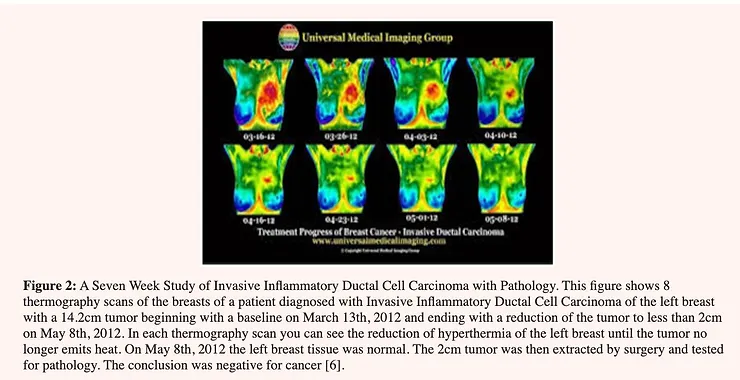
Figure 2: A Seven Week Study of Invasive Inflammatory Ductal Cell Carcinoma with Pathology. This figure shows 8 thermography scans of the breasts of a patient diagnosed with Invasive Inflammatory Ductal Cell Carcinoma of the left breast with a 14.2cm tumor beginning with a baseline on March 13th, 2012 and ending with a reduction of the tumor to less than 2cm on May 8th, 2012. In each thermography scan you can see the reduction of hyperthermia of the left breast until the tumor no longer emits heat. On May 8th, 2012 the left breast tissue was normal. The 2cm tumor was then extracted by surgery and tested for pathology. The conclusion was negative for cancer [6].It is important to note that abnormally high body heat, caused by localized tissue acidity can lead to thermo genesis or hyperthermia showing metabolic acidosis or what I call ‘latent tissue acidosis’. Thermography is the only scientific technology that can visualize tissue inflammation and those specific acidic areas of the body that may be showing inflammation and at risk for becoming cancerous. When an area of tissue acidosis is viewed using thermography another non-invasive, non-radioactive medical diagnostic tool called ultrasound can be used to determine anatomically if there is a pathological clot or tumor mass, the size of the tumor mass and whether or not the tumor mass has angiogenic blood supply (Figure 3).
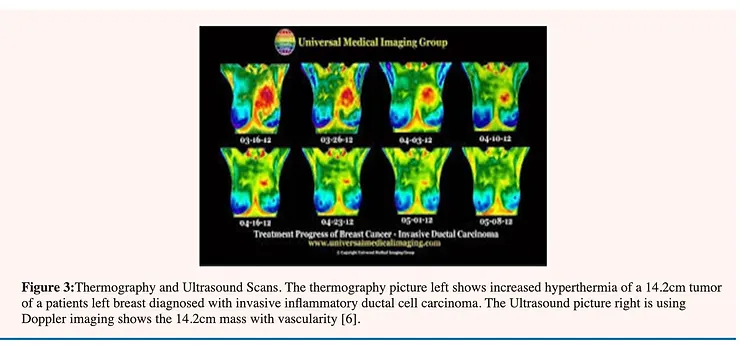
Figure 3:Thermography and Ultrasound Scans. The thermography picture left shows increased hyperthermia of a 14.2cm tumor of a patients left breast diagnosed with invasive inflammatory ductal cell carcinoma. The Ultrasound picture right is using Doppler imaging shows the 14.2cm mass with vascularity [6].
Other Changes in the Microenvironment
Acidity or inflammation is known to cause other such changes in the microenvironment of body cells. Body cells often undergo adaptive changes to survive stressful or acidic environments. These adaptive changes can include: an increased expression of sodium bicarbonate, increased antioxidant levels, increased anaerobic respiration and metabolism; and development of angiogenic factors. This adaptation is usually transient, however, and allows normal body cells to survive only until the acidic condition that is causing the inflammation or cancerous condition is alleviated.
This means it’s not enough to have a strategy to eradicate cancerous body cells or to kill cancerous body cells with chemotherapy or radiation. Chronic acidic inflammation or ‘latent tissue decompensated acidosis’ needs to be buffered and eliminated through the four channels of elimination – urination, defecation, perspiration and respiratory in order to prevent any systemic acid build-up in the connective and/or fatty tissues leading to a cancerous condition.
Gene Pathways that Fuel Cancer Spread When Inflamed
According to a study by the Division of Hepatology and Gene Therapy at the CIMA-Universidad de Navarra in Spain, “Epidemiological studies have established that many tumors occur in association with persistent inflammation. One clear example of inflammation-related cancer is Hepatocellular carcinoma (HCC). HCC slowly unfolds on a background of chronic inflammation triggered by exposure to infectious or agents (hepatotropic viruses), toxic compounds (ethanol/alcohol), or metabolic impairment[7].
”Besides these acid causing inflammatory mediators, mounting evidence points to the deregulation of specific growth and survival-related pathways in HCC development. Among them is the pathway governed by the epidermal growth factor receptor (EGFR), which can be bound and activated by a broad family of ligands. Of special relevance is the fact that the EGFR engages in extensive crosstalk with other signaling pathways, serving as a “signaling hub” for an increasing list of growth factors, cytokines, and inflammatory mediators. In this review, I have summarize the most recent evidences supporting a role for the EGFR system in inflammation-related cell signaling, with special emphasis in liver inflammation and HCC. The molecular dissection of the pathways connecting the inflammatory reaction and neoplasia will facilitate the development of novel and more effective anti-tumor strategies.Oncogenes can push for the greater expression of EGFR because tumors have genes just like healthy body cells. Why? Because tumors are the collection of unhealthy body cells which are now rotten or cancerous cells with their associated acidic waste products encapsulated in a web of cross-linked fibrin-monomers.One of the most highly expressed receptors is called Epidermal Growth Factor Receptor (EGFR), which is normally used to tell cells to grow. It is found in all cancerous body cells. However, EGFR over-expression has been linked to numerous cancers, such as lung, prostate, anal and many others. The greater the expression of EGFR means faster growth and enhanced spreading via the ‘domino effect’ where one cell spoils or rots another cell just like one falling domino will topple another standing domino. The bottom line is, acid causing inflammation is the cause of it.This increased expression is also associated with increased chemotherapy resistance, leading to tumors that are not well-formed and have blood supply. When you combine chronic acidic caused inflammation, these misused signaling pathways and overgrowth, you get a cancerous condition that is “immortalized.”
Treating a metastatic cancerous condition is hard enough, but when it’s of this magnitude it can be extremely difficult, if not impossible, especially when ignoring the chronic acidic inflammation or ‘latent tissue acidosis’ at the unhealthy or spoiling cancerous cells’ metabolic core.There is no singular legend drug that can currently treat any of these pathways. However, there are some integrative and complimentary approaches that, when used properly, can impact these inflamed targets from a multi-dimensional approach. This is how the integrative non-invasive, non-chemical, non-radioactive and non-surgical methods can be used to provide much needed support for buffering and eliminating metabolic, dietary, respiratory and environmental acids that are the cause of ALL cancerous conditions.
There are many different approaches to get at the root of a cancerous condition, rather than just a “one size fits all” protocol that offers little to no assistance to removing the acidic cause of inflammation that leads to all cancerous conditions.
How does inflammation occur?
There is only one cause. The one cause and only cause of inflammation that leads to a cancerous condition is the over-acidification of the blood and then interstitial fluids that surround the tissues due to an inverted way of living, eating and thinking. It is that simple. Prevent and eliminate the acidic waste products of diet, metabolism, breathing and the environment through the four channels of elimination and you will prevent or reverse ALL potential and/or present cancerous conditions.According to News-Medical.net, “[NF-Kappa-B] spends most of its life in the cell’s cytoplasm, quietly awaiting protective orders for healthy body cells.”
But when extracellular of the blood plasma and interstitial signals – of dietary and/or metabolic acids build-up in and around cells, for example – this sets off cellular protective alarms, the cell unchains its warhorse of antioxidants, such as glutathione, bicarbonates and hydroxyl ions, allowing it to protect itself from the acids that cause inflammation and cell death [8].
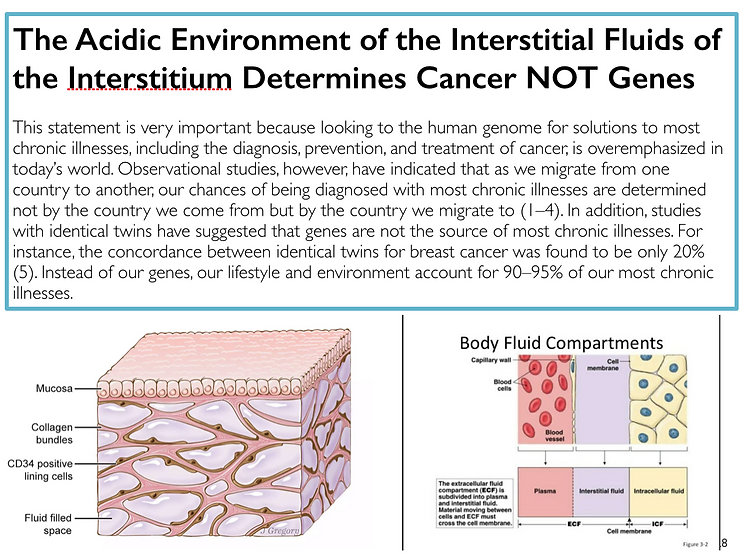
These are only a few of the many signaling and inflammation pathways that can be targeted in an alternative and/or complimentary treatment. When the cause of inflammation is understood, it makes it that much easier to prevent and/or reverse a cancerous condition from building-up and negatively affecting the health of the tissues, glands and organs and outgrowing the window-of-opportunity for a non-invasive, non-radioactive, non-chemical and non-surgical alkalizing lifestyle and dietary treatment. Helping enhance the effectiveness of any cancerous treatment with a holistic and/or integrated approach involves strong comprehensive anti-inflammatory or anti-acid and cancer-signaling treatments.
Conclusion
Buffering and eliminating metabolic, dietary, respiration and environmental acids that cause inflammation is only one part of a complete treatment plan – there are many other aspects to consider, including hyper-perfusing the tissues with alkalizing compounds such as sodium and potassium bicarbonate, alkalizing nutrition with vitamins and herbs, alkalizing colon hydrotherapy, alkalizing exercises, alkalizing food, healing the core and restoring its alkaline design, supporting the immune system, building healthy stem cells in the crypts of the small intestines with chlorophyl and hemp oil, targeting antioxidants, alkalizing exercise, infrared sauna and much more.
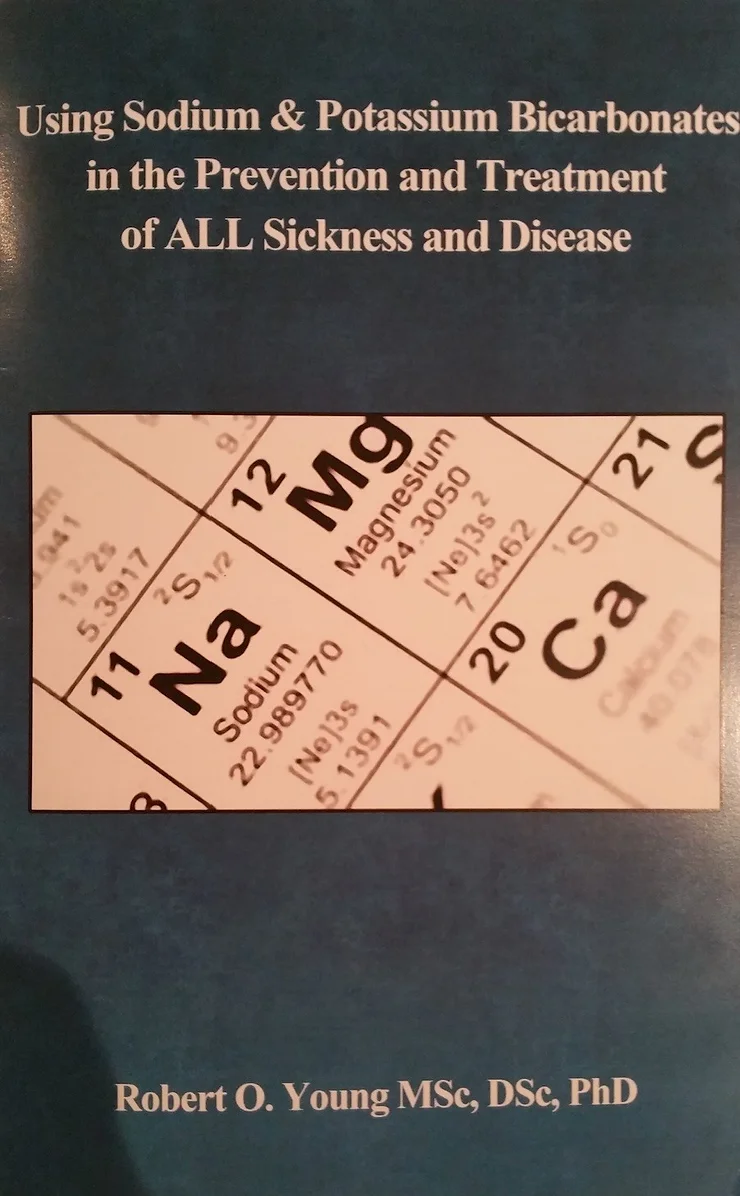
However, if you can reduce interstitial acidosis or ‘latent tissue acidosis’ you will reduce inflammation and reduce the risk of a cancerous condition which makes it much easier to maintain and hopefully, overcome. Otherwise, if you keep building-up and holding onto the acids that cause inflammation, a cancerous condition can outgrow any holistic alkalizing treatment. It becomes a race-to-the-finish to slow down the build-up of dietary and metabolic acids in the interstitial and intracellular fluids that systemically flow through the body fluids touching everybody cell and potentially causing more healthy cells to become unhealthy acidic cancerous cells. If this scenario is not stopped there is no-way to stop acids from causing all tissues, organs and gland to start spoiling and becoming cancerous. This is what conventional oncology calls metastasis. But it is NOT metastasis! It is systemic interstitial decompensated acidosis that leads to inflammation, tissue acidosis and an acidic condition conventional medicine calls ‘cancer’.The best part about this alkalizing approach to the treatment of any inflammatory and cancerous condition is they are helpful for most, if not all cancers.
If you have any questions about your inflammatory and/or cancerous condition, or would like to know more about how integrative and/or complimentary medicine might help YOU, please contact us today at: phmiraclelife@gmail.com or universalmedicalimaging.com
To learn more about metabolic and dietary acids as the fuel that ignites inflammation, “Metabolic and Dietary Acids Are the Fuel That Lights the Fuse That Ignites Inflammation That Leads to Cancer”! by Dr. Robert O Young. You can order this book by clicking on the following link: https://www.amazon.com/gp/product/B01JKGPB1M/ref=dbs_a_def_rwt_hsch_vapi_tkin_p3_i5
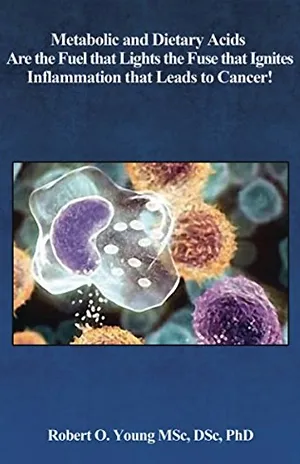
References
1. Young Robert, Young Shelley (2010) The pH Miracle. Balance Your Diet, Reclaim Your Health. Hachett Publishing, Haryana, India.E Tili, JJ Michaille, D Wernicke, H Alder, S Costinean, et al. (2011)
6. Migalko Galina, Universal Medical Imaging Group. Sherman Oaks, California, USA.
8. Z Zou, B Huang, X Wu, H Zhang, J Qi, et al. (2014) Brd4 maintains constitutively active NF-κB in cancer cells by binding to acetylated RelA. Oncogene 33: 2395-2404.



